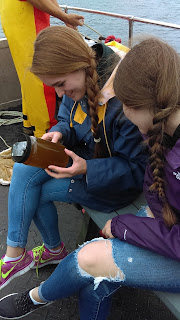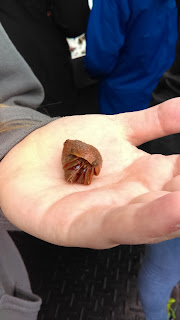Collecting fresh plankton onboard the research vessel.
Phytoplankton & zooplankton samples.
Sorting through the animals collected using the benthic drag.
A rare find, red soft coral.
A diversity of stars: purple sunstar, blood star, brittle star & common seastar.
Growing back two arms.
Studying the internal anatomy of a scallop.
There were many rock crabs collected.
A sand shrimp & armoured shrimp.
A sea cucumber with its feeding tentacles out.
Collecting data on the temperature & salinity of the water using the salinometer.
Studying the plankton in the lab.
Learning new microscope skills.
Different species of phytoplankton.
A copepod, note the one eye spot.
Exploring the intertidal zone.
Four little seastars all in a row.
A green crab with a unique colour.
Lots of animals live under the rocks including sea urchins.
Quick stop at the Bar Road, which at high tide is totally covered with water.
In the lab identifying the animals collected on the boat & beach.
Using the microscopes to study urchin external anatomy.
Drawing & labelling the parts of the urchin.
Behaviour experiments: Does size effect the flipping rate of urchins?
How about sea stars?
How do crabs react to light?
Does temperature effect the feeding rate of barnacles?
Which species of echinoderm is the strongest?
Searching for the invasive green crab.
Data is gathered on the size and gender of each crab.




























































